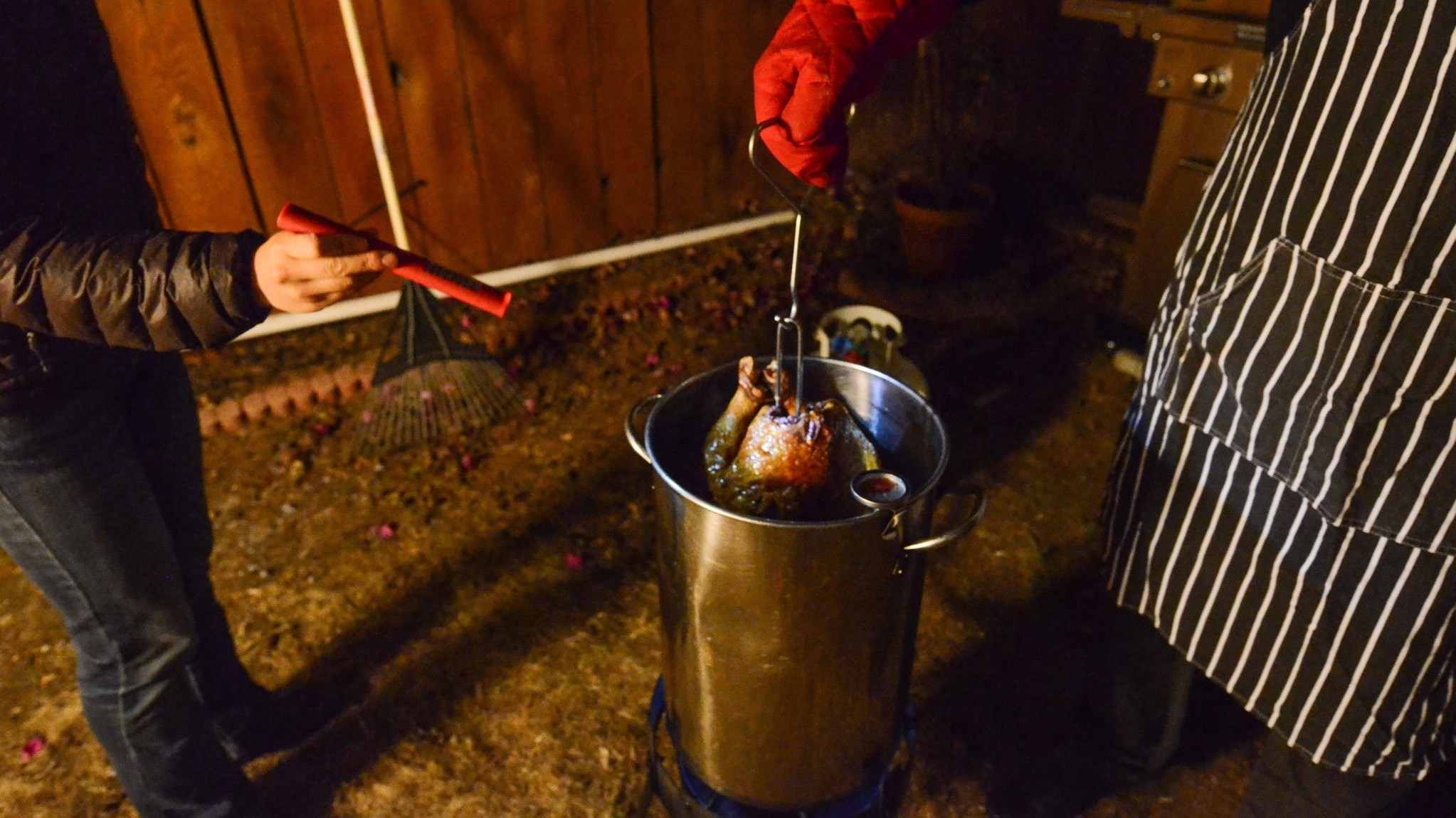How To Fry A Turkey Without Maiming Yourself
With these turkey frying tips, you won't have to dial 911 this Thanksgiving.
My boyfriend's dad acquired a deep fryer a few years ago. Ever since, he's made a name for himself as the Grease King of the Philadelphia Suburbs. He's even scored a killer nickname: "Fryin' Brian." If you're pulling a Fryin' Brian this Thanksgiving, it's time to brush up on your fryer safety. Thanksgiving is the peak day for home cooking fires, and finicky turkey fryers are a common culprit. Behold, FEMA's tips for a casualty-free fried Thanksgiving:
1. Size is key: A 12- to 14-pound turkey is usually the biggest bird a turkey fryer can accommodate. Choose wisely, and make sure to thaw and completely dry your bird before plopping it into the fryer, since a partially frozen turkey will cause hot oil to splatter. The National Turkey Federation recommends thawing the turkey in the refrigerator approximately 24 hours for every four or five pounds of turkey.
2. Find the right spot: Use your turkey fryer outdoors on a sturdy, level surface well away from your home, your pets, and your kids. If you have an indoor electric fryer, we still recommend setting it up on your porch, patio, garage, or any other outdoor area.
3. Never overfill: Most fryers have a clearly delineated oil fill line. Never exceed the fill line, since an overfilled cooking pot will cause oil to spill over when the turkey is placed inside.
4. Slow and steady: Turkey fryers can overheat faster than you can say "damn, that turkey is smoking hot." Heat the oil slowly, and keep a close eye on the oil's temperature as the turkey cooks.
5. Eyes on the fryer: For the love of God, keep an eye on your fryer throughout the cooking process. The quicker you spot a fire, the faster you can put it out—but remember that you should never use water on a grease fire. Instead, keep an all-purpose, dry-powder fire extinguisher nearby in case of a poultry emergency.
Happy frying!
